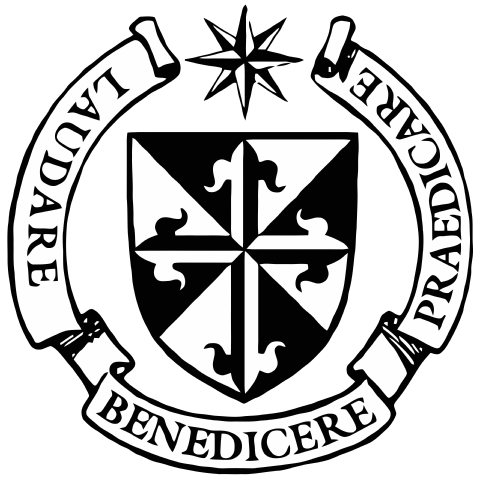Homily for the Solemnity of the Assumption of the Blessed Virgin Mary
Some scholars, mostly non-Catholic, have tried to claim that our brother, St Thomas, did not hold for the dogma of the Immaculate Conception of the Blessed Virgin Mary, as it would later be infallibly defined (six centuries later!) by Blessed Pope Pius IX in 1854. And in doing so, what they try to claim is that St Thomas did not hold for the sinlessness of the Blessed Virgin Mary, which is categorically false.
In the Tertia Pars, we read: “I answer that, God so prepares and endows those, whom He chooses for some particular office, that they are rendered capable of fulfilling it, according to 2 Cor. 3:6: ‘(Who) has made us qualified ministers of a new Covenant.’ Now the Blessed Virgin was chosen by God to be His Mother. Therefore, there can be no doubt that God, by His grace, made her worthy of that office, according to the words spoken to her by the angel (Lk. 1:30,31): ‘You have found favor with God: behold, you will conceive,’ etc. But she would not have been worthy to be the Mother of God, if she had ever sinned. (...) “We must therefore confess simply that the Blessed Virgin committed no actual sin, neither mortal nor venial; so that what is written (Song 4:7) is fulfilled: ‘Thou art all fair, O my love, and there is not a spot in thee,’ etc.”
Yet, why am I dwelling on the Immaculate Conception of the Blessed Virgin Mary on the Solemnity of the Assumption of the Blessed Virgin Mary, body and soul, into heaven at the end of her earthly life? Because St Thomas Aquinas did most certainly confess belief in the Assumption of the Blessed Virgin Mary, which would be formally defined by the Church seven centuries after St Thomas, (as I mentioned at First Vespers yesterday) only 75 years ago, in 1950 by Pope Pius XII.
The Feast of the Assumption or Dormition of the Blessed Virgin Mary arose in the Eastern part of the Church but was established also in the West by the mid-seventh century and was called “Natale Sanctae Mariae” celebrated on August 15th every year, referring to Our Lady’s “birth” into heaven. Pope Sergius I, towards the end of the seventh century, who was from Syria, the Christian East, brought many Eastern liturgical customs into the Latin Church. In the thirteenth century, St Thomas’s most famous teacher, St Albert the Great, who is known by all for his tender devotion to the Mother of God, in his commentary on the first chapter of St Luke’s Gospel, wrote: "It is plain that the Most Blessed Mother of God has been assumed in body and soul beyond the choirs of Angels. And this in every way we believe to be true." St Thomas found in Psalm 132, the verse that reads, Go up, Lord, to the place of your rest, you and the ark of your strength, a scriptural reference to belief in the Assumption of the Blessed Virgin Mary, she who is the true Ark of the New and Everlasting Covenant.
Our brother St Pope Pius V, in promulgating the Sacramentary, the Roman Missal of 1570, part of the work of the Council of Trent and the Catholic Counter-Reformation, firmly established the Assumption of the Blessed Virgin Mary as a major feast.
St Francis de Sales, another great saint of the Catholic Counter-Reformation, following the writings of St John of Damascus or St John Damascene whose life spanned the 7th and 8th centuries, held that Mary, at the end of her earthly life, died to be in solidarity with Christ, and in communion with all her sons and daughters who must face the sad reality of dying. Yet her death, unlike the death of all of her sons and daughters, was not a punishment for Original Sin. Because she was preserved from the stain of sin by the grace of her Immaculate Conception, Mary’s death was a sharing in Christ’s death for the salvation of her sons and daughters. Mary’s death was an act of redemptive – co-redemptive – love.
In fact, St. Francis de Sales preached that Mary would have died with Christ on Calvary; she would have died with Him out of love, had Our Lord not prevented her from dying. Christ willed that she should remain with His newborn Church, to strengthen His disciples in faith and charity, and to bear witness to the mystery of the Incarnation. According to St. John Damascene and St. Francis de Sales, Mary’s death was beautiful. It was not surrounded by fear and anxiety; there was no struggle. Rather, when it came time for her to pass from this life to the Father, she literally died of love of her Son. Our Lady freely, even joyfully, handed over her soul to the Father in this last act of love, an act of love like Christ’s act of love on the Cross, when he cried out, “Father, into your hands I commend my spirit.” Christ had taught Mary how to die on Calvary, and when the moment came, drawing upon His grace, she freely offered her life and her death for us and for our salvation.
Through her maternal intercession, may our Lady assumed into heaven obtain for each of her sons and daughters the grace to die in imitation of her. Fr. Brian Mulcahy, O.P.
